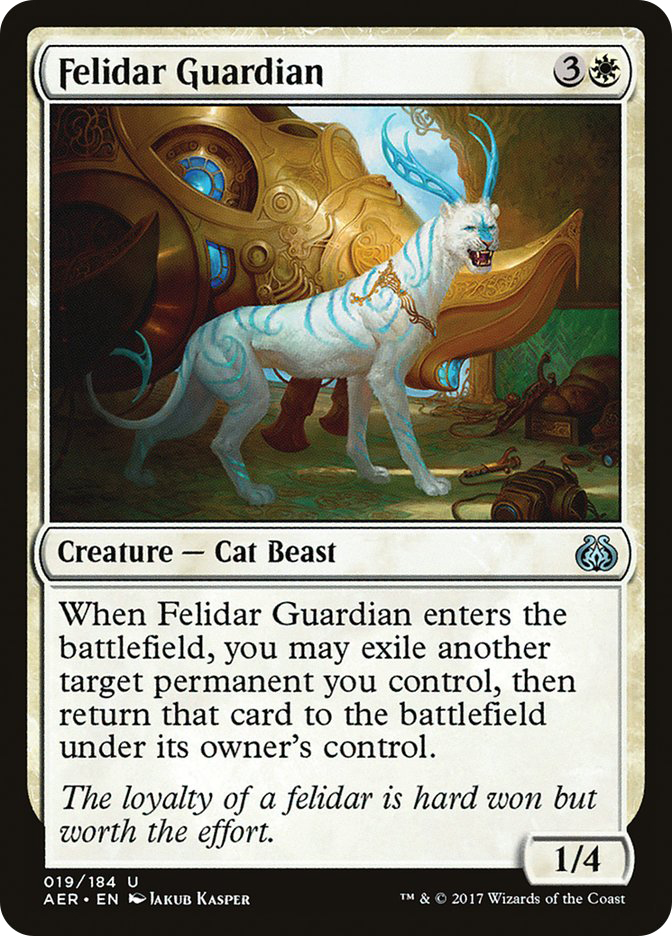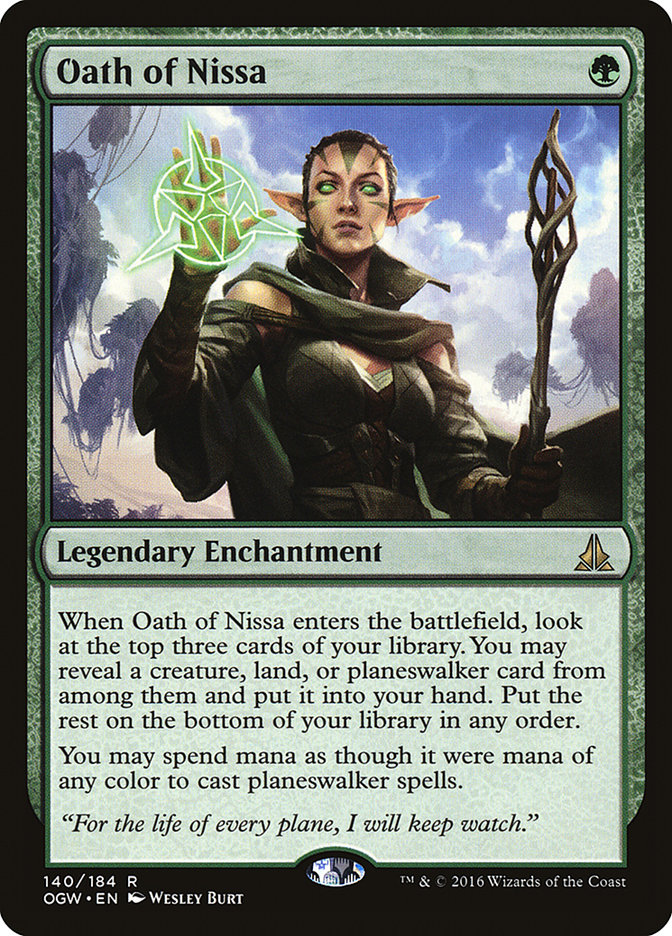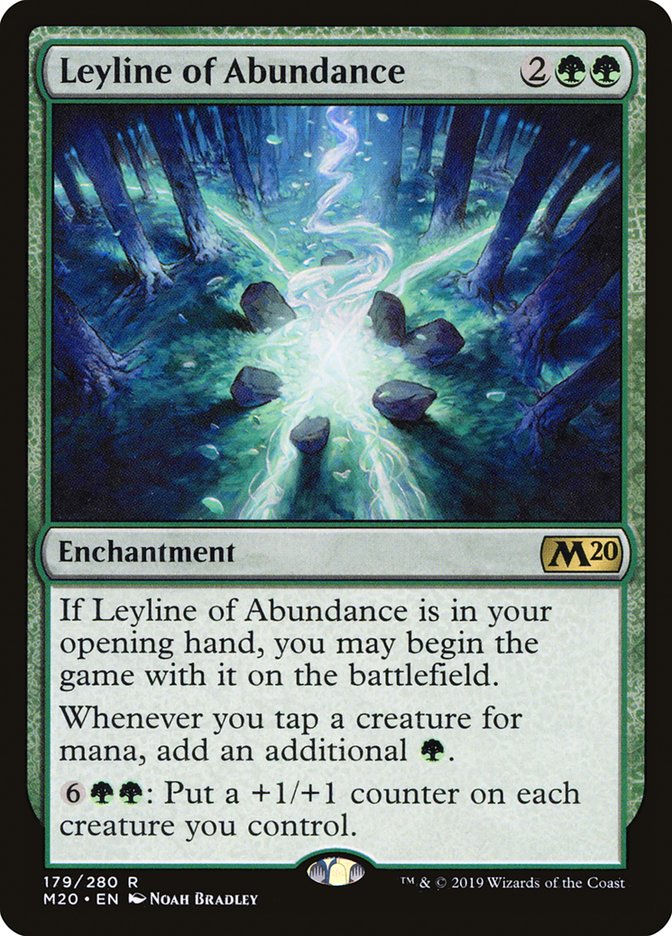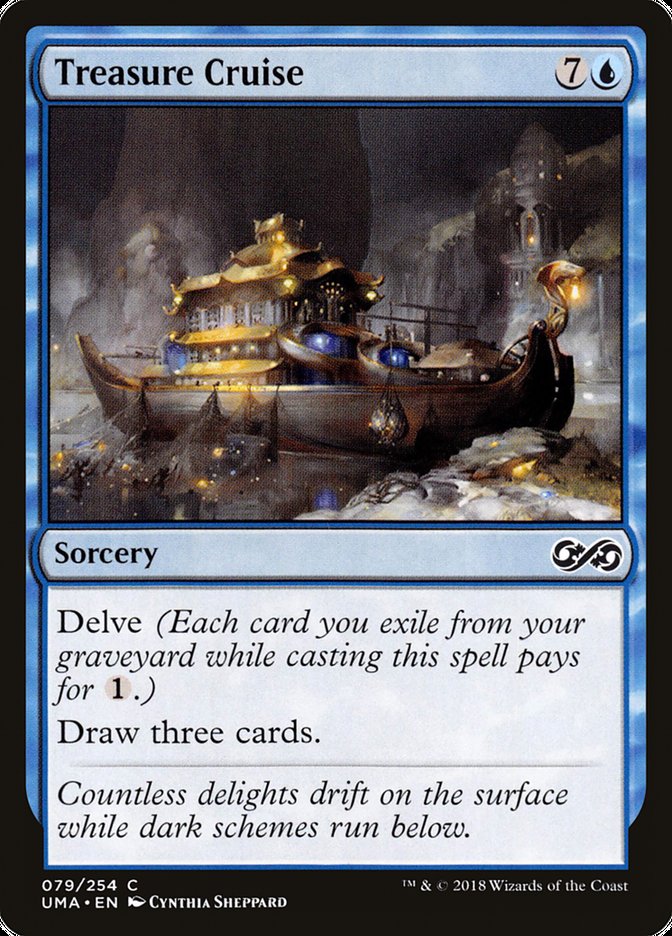Welcome to another edition of
Fact or Fiction
! Today Ari Lax, Ryan Overturf, and Patrick Sullivan are here to give
their takes on five statements on the
November 4th Pioneer Banned & Restricted
Announcement
.
Don’t forget to vote for the winner at the end!
1. Banning Felidar Guardian in Pioneer was a good decision.
Ari Lax: Fact.
Felidar Guardian was one of the cards that made me wonder why only five
cards were banned to start Pioneer. It was really clear up front the card
was a huge issue, as we have many similar instances with Splinter Twin and
Felidar Guardian to show this style of combo only gets better as the other
52 cards you play get tuned as the format ages.
But I don’t mind that we got a brief trial period to see it in horrible
action. I think if you’re starting things off with fairly low stakes, it’s
nice to let it all ride. Not only might you find out things aren’t as bad
as they seemed, if a card does wreck everything you can just point to that
when evaluating the format years down the line. The alternative is the
“Golgari Grave-Troll in Modern” scenario where an unban occurs only to have
to be reverted, and that is not good times.
Ryan Overturf: Fact.
I’ve been having a ton of fun playing Pioneer. A big part of that is
searching through the selection of legal cards and seeing how the pieces
fit together in new and interesting ways. For as exciting as Pioneer has
been, the Felidar Guardian combo stood out as having a “not this crap
again” vibe.
Beyond being profoundly boring, the Saheeli Rai + Felidar Guardian combo
doesn’t fit the texture of what the other decks have been doing in the
format so far. Many of the matchups are interesting and cause you to think
a lot about how to interact with your opponent, while the Copy Cat combo
just leaves you looking at a very narrow selection of cards while mostly
hoping that they don’t have it. Did I mention that the deck is very boring?
The broader question is one of whether Felidar Guardian or Saheeli Rai was
the correct ban. Guardian seems more likely to break again in some other
way, so I buy it as the correct ban. Saheeli is kind of soft-banned on
account of being such a bad card, but I think this is a lesser
consideration.
Patrick Sullivan: Fact.
I don’t think it’s feasible to manage the format around Felidar Guardian
+ Saheeli Rai, and of those two cards I think keeping Saheeli legal isn’t a
particular close call. Saheeli is a Mythic Rare that is fairly innocuous
and novel outside of its combo applications; Felidar Guardian is boring as
hell even in its fringe applications. I would have been extremely surprised
to see Felidar Guardian survive past the first ban list update, and I think
Wizards of the Coast exercised good judgement here in not playing with
fire.
2. Banning Oath of Nissa in Pioneer was a good decision.
Ari Lax: Fact.
Oath of Nissa was Faithless Looting in Pioneer.
I pointed this out on Monday
, but it had properties as a permanent with Nykthos, Shrine to Nyx and
Eidolon of Blossoms, properties as a mana fixer with Teferi, Time Raveler
and Saheeli Rai, properties as a card type with Kethis, the Hidden Hand and
Traverse the Ulvenwald, and more on top of just being a solid cantrip. The
only reason we don’t see more Oath of Nissa in Modern is that format has
more spells like Scapeshift or Mox Opal driving synergies than creatures or
planeswalkers.
But really, it points to another bigger issue. Much like Modern had an
early reckoning with Ponder, Preordain, and blue cantrips, Pioneer is going
to have a reckoning with green draw fixing. Once Upon a Time is the Ancient
Stirrings of the format, the way too efficient card selection spell with a
joke of a restriction. Traverse the Ulvenwald and Attune with Aether fit a
similar but weaker mold. I don’t know what the cutoff point of too good is,
but each of these remaining cards caused issues in their respective
Standard formats. If you want to build new green decks in Pioneer, figure
out how to exploit them.
Ryan Overturf: Fact.
As Cedric Phillips would tell you, Oath of Nissa is the green Ponder ( CEDitor’s Note: Dude… cmon…).
More seriously, the next best cantrip in Pioneer after Oath of Nissa is Opt
(shut up about Once Upon a Time), and the Oath of Nissa decks were doing
their things much more consistently than the other decks. So, along that
metric, you get another example of cards and decks that feel like they’re
playing a different format. Oath also just has a ton of relevant
interactions on top this. It’s a pip for Devotion, you can value bounce it
with Teferi, Time Raveler, it’s a very efficient enabler for Delirium,
etc…
There’s a pretty loud statement here that they want Pioneer decks to have
dynamic gameplay, which is something I find difficult to argue with.
Patrick Sullivan: Fact.
Oath of Nissa seems pretty innocent, but it has all the makings of a card
that creates problems over time. It’s a powerful, variance-reducing cantrip
that puts a permanent onto the battlefield and is Legendary, so it has a
very high floor and interacts with all sorts of other stuff (things that
count about mana symbols, enchantments, Legendary characteristics, etc.)
Modern is already defined by these sorts of cards, and it’s good for each
format to be defined by different things. I think it is especially worth
culling cards that make the first few turns play out the same way in light
of the London Mulligan.
I like the Oath of Nissa ban for a larger, systemic reason as well – I
believe that Magic is overpopulated in almost all formats by cards that
just replace themselves and provide a little bit of value instead of, you
know, actually doing something or advancing the game state, and I think
Magic would be well-served by having more cards in the latter camp define
constructed than the former.
3. Banning Leyline of Abundance in Pioneer was a good decision.
Ari Lax: Fact.
The Mono-Green Devotion deck in Pioneer made me wonder if we should be
building that deck in Modern. It really was that good, and it was largely
based on additions from the last two sets. While Nykthos, Shrine to Nyx was
the mana centerpiece of the deck, it normally was something that required
mana investment for mana output. It had limiting factors based on card
density, crumbled under interaction, and is notorious for having awkward
payoff-incentive balance issues in deck building.
The problem with Mono-Green Devotion was clearly one of the free spells. I
talked about Once Upon a Time before and wouldn’t be shocked if that needs
to go later, but Leyline of Abundance was kinda Mox Emerald that also had
double green in the cost. I think with another visit to Theros upcoming and
possibly bringing more Devotion cards with it, swinging at the scary
proactive enabler was a fine start.
Ryan Overturf: Fiction.
This is where they lose me in a big way.
My favorite feeling in Magic comes from the various iterations of Shocking
Llanowar Elves. Bolting Birds. Lava Darting Noble Hierarchs. These are the
reasons I get out of bed in the morning. This feeling is dramatically
amplified when my opponent has also mulliganed by putting Leyline of
Abundance on the battlefield. There’s a huge opportunity cost to play a
card like this to the point that absent Nykthos, Shrine to Nyx you would
see immeasurably fewer Leylines. There’s more than one reason we don’t
regularly see decks of this nature in Modern.
Maybe they never reverse the decision to ban Leyline, but I won’t be the
least bit surprised if we see this decision mostly walked back by an
eventual banning of Nykthos. It’s true that Leyline is the best enabler for
the card, but what’s truer is that there are plenty of other configurations
with Nykthos that generate way more mana than other decks in the format.
Maybe you want a big mana deck that can function with this kind of engine,
but once again you’ll feel like you registered for the wrong tournament the
next time your opponent goes off with Burning-Tree Emissaries and Nykthos.
This is a very heavy-handed ban defending Nykthos, a card plenty capable of
showing up in other busted shells. This isn’t on the level of Bridge from
Below biting it for Hogaak/Faithless Looting, but the texture sure feels
similar.
Patrick Sullivan: Fiction.
This one is puzzling to me for several reasons. The first is how this
interlocks with the management of the banned list in the first place. WotC
has declared that, at least for the foreseeable future, they will be
announcing updates to the Pioneer banned list every Monday. I’m not sure
how I feel about that as a policy, but one of the upsides is that they can
be extremely efficient with how they react to problems. It’s one thing to
be cautious in the face of uncertainty when the next opportunity to ban is
three months about, it’s another altogether when you can react the morning
after each major event. In that framework, it seems strange to ban
something without a consensus that the card is at least problematic; I’m
not sure I saw the card mentioned as a likely candidate by people either
“in the know” or vaguely invested.
I think this matters because the early ban announcements will signal to the
community how aggressively WotC intends to manage Pioneer. The signal here
could be damaging to the early enthusiasm in many parts of the community –
fatigue around bannings and the related conversations is a real thing, and
while WotC got out in front of things by saying they intended to ban early
and often, there are limits to people’s tolerance for it even when it is
set as expectation. Given these considerations, I’m surprised to see WotC
take action on a card that was both “off the radar” and easy to create
consensus around in the event it proved problematic.
This ban also represents a big bet on Nykthos, Shrine to Nyx, and that was
even alluded to in
the article itself
. I have my doubts that the format can be healthy with that card as a
foundational element, nor am I the biggest believer in its gameplay, even
if Devotion encourages at least some play on the battlefield. I think I
would have preferred either a ban to Nykthos or to let things play out a
little bit longer (and then take action against whatever makes the most
sense) rather than ban something so far out of left field while also
propping up something that might not be sustainable in the long-term
anyway.
4. Dig Through Time and/or Treasure Cruise should have been banned in
today’s Pioneer B&R announcement.
Ari Lax: Fiction.
Having fiddled around with the Izzet Phoenix deck that is the current
best home for Treasure Cruise, I was really reminded of the potency of the
delve card draw spells in Standard rather than non-rotating formats. There
aren’t fetchlands to give you a bonus delve mana every turn. Cruise and Dig
Through Time are strong card draw spells, but they are later plays that
don’t chain into additional copies that well. I’ve heard of people wanting
to play Tome Scour to get them going, and at that point what are you really
accomplishing?
I wouldn’t be shocked to see an eventual world where these cards end up
finding the enablers to break them, and by eventual I could literally see
someone figuring it out tomorrow. But for now, I think both are in the
Thirst for Knowledge or Fact or Fiction tier of card draw for Pioneer. They are good, but they aren’t broadly overpowered.
Ryan Overturf: Fact.
You know, I hate to say it, but you may as well.
I loved the initial decision to start with fetchlands as the only banned
cards fully understanding that more bans would be coming. Treasure Cruise
and Dig Through Time, cards banned pretty much everywhere else, were near
the top of my list for eventual bans. Giving the format time to shape up
made sense and made the starting point for the format more interesting, but
now that we’re swinging the hammer we may as well hit the obvious ones.
Completely ignoring the fact that Izzet Phoenix was one of the best decks
in the format prior to yesterday’s update, these cards only get better the
larger the format gets. It’s abundantly clear that these are whens and not
ifs to anybody remotely capable of managing a banlist. I’ll be packing
Izzet Phoenix featuring Treasure Cruise when I make my way out to Richmond
en route to compete in the Season Two Invitational in Roanoke the week
after and I can’t shake this sinking feeling that Cruise just gets banned
next Monday. I suppose I’m cool with a ban that hits anytime other than
literally next Monday, but for Cruise the writing is already on the wall.
You could more realistically make a case for keeping Dig around, but why
bother.
Patrick Sullivan: Fact.
I’d rather ban the obvious cases right away as to limit the total number
of announcements with bannings in them, given the frantic schedule they’ve
set up for themselves. I guess the hope is that the format can be managed
around these cards? That blue needs this sort of subsidization right now,
and you can get away from it later without much backlash? These seem to be
low-probability bets to me against the scenario that people acquire cards
to build around them, the cards are problematic for the reasons they’ve
been problematic in every other constructed format, and then you ban them
anyway. I don’t think many players would have batted an eye if they
appeared on the first update, but the costs go up the longer you wait. I’m
interested to see what the plan is here, if any, but were I working there
they’d be near or at the top of my list of cards to get rid of ASAP.
5. Having a B&R announcement every Monday is good for the long-term
health of Pioneer.
Ari Lax: TBD.
I was really skeptical of this prior to this weekend’s results. It really
felt like there wasn’t enough public data from one event to make real
decisions.
But last weekend made it fairly clear that Copy Cat was just a miserable
barrier to entry into the format, and Mono-Green Devotion felt like it was
operating on a completely different level. You could leave this all legal
and hope it sorts itself out, but I don’t think that is how R&D wants
to align this new format. They took aggressive bans to try and sculpt the
format, and they all made sense.
While
I like Abe quite a bit, this tweet is legitimately everything wrong and
everything I hate about competitive Magic conversation in 2019 https://t.co/TIFzvePr3C—
Cedric Phillips Burbank (@CedricAPhillips) November
4, 2019
The reason this is TBD and not Fact is that a decision point every week
leaves a lot of room to make fast, reactive, and just straight up bad
choices. Modern in 2019 would be a much worse place if the reaction to
Death’s Shadow in 2017 was aggressive, and that deck really did dominate
for a solid six or eight months.
This is still a really fidgety subject, and I can’t pile it into one Fact
or Fiction response. The old world of super reactive bans also sucked at
times, like when Bloodbraid Elf Jund was the best deck in Standard for half
a year. Forcing a format into a box eventually fails, like we saw in
Modern. There’s a medium, I think this first announcement was on point, but
there isn’t info to say if WotC will use their power wisely and let the
format breathe or have everyone living in constant fear of the hammer
swinging. Honestly, with this much uncertainty the certain outcome might be
that finding the balance is going to fail and you just have to hope you
don’t go too far out of line either way when it does.
Ryan Overturf: Fiction.
My hangup here is the “long-term”. I’m not sure at which point you end up
putting Pioneer on the regular schedule, but having updates every Monday is
clearly a short-term solution to make sure you don’t have multiple weeks in
a row where your relatively uncurated format ends up being miserable and
kills initial excitement. The weekly updates are arguably a very good
safety valve for keeping momentum going as we explore the format early on,
but the longer they keep posting updates weekly the more likely the format
fades into obscurity as consumer confidence shrinks progressively over
time.
I get why they’re handling the format this way. The optics of announcing
this methodology after we had all dived into the format are quite bad, but
they at least make some sense in the short term. Emphasis on short. I’m a
huge fan of Pioneer and I really want to see the format succeed. I believe
that making a plan to move off of a weekly announcement regarding potential
bans as fast as possible is essential to the format’s success.
Patrick Sullivan: Fiction.
I guess it depends on the actual reality on the ground; WotC could start
of very aggressively and then pivot to less frequent updates once the
format has settled a little bit. The Leyline of Abundance ban signals
something very different, but maybe that ends up being one outlier among
what are mostly expected changes. That’s only part of the consideration.
When I played Magic at my most competitive, WotC had an entirely different
ideology surrounding bannings; that they were measures of last resort and
represented a failure of the design team responsible. Clearly there has
been a shift; it is expressed more as breaking some eggs while making an
omelet nowadays. One can argue which approach is better; certainly, I’ve
played some absolutely miserable formats as a result of the previous
ideology, but one clear benefit was that conversations around bannings were
barely any part of the discourse. Players knew (consciously or not) that
the problems weren’t going to solve themselves so they set about solving
them as best they could. I can’t imagine approaching SCG ten years ago with
an article about the banned list for any format; it would have been more
topical to discuss how to avoid game losses due to manufacturer defects on
your sleeves.
As WotC has taken a more aggressive approach to bannings, it occupies more
space in the community conversation (and lowers the bar for what types of
cards are deemed worthy of discussing), and I can’t think of many topics
more fatiguing and dampening of enthusiasm to engage with for most players
than arguing about which cards we shouldn’t be allowed to play with
anymore. I can’t imagine that being lessened by an announcement every week,
with the volume of speculation and deconstruction that comes before and
after the fact. I have a higher enthusiasm for these conversations than
most (maybe all), but even I’d like to get back to talking about the game a
little bit.







